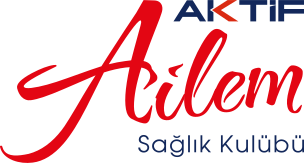Ethnic Rhinoplasty has garnered significant attention and popularity in the realm of cosmetic surgery for its personalized approach to enhancing nasal aesthetics while respecting and preserving the unique features of an individual’s ethnic background. This tailored surgical procedure is preferred by many because it offers a harmonious balance between aesthetic enhancement and cultural identity preservation, addressing specific concerns that generic rhinoplasty might overlook. It’s not just about achieving a more pleasing appearance; it’s about embracing and celebrating diversity, ensuring that patients feel seen, understood, and beautifully themselves.
What is an Ethnic Rhinoplasty?
Ethnic Rhinoplasty is a specialized form of rhinoplasty designed to improve the nasal shape, size, or function while carefully considering and preserving the ethnic characteristics of the patient. This approach is tailored to individuals from diverse ethnic backgrounds, such as African, Asian, Hispanic, Middle Eastern, and others, aiming to produce results that are in harmony with the patient’s unique facial features.
What are the different types of Ethnic Rhinoplasty?
There are various types of Ethnic Rhinoplasty, each tailored to address the specific anatomical and aesthetic concerns associated with different ethnic groups. These can include procedures focused on nasal reshaping, nostril reduction, nasal bridge augmentation or reduction, and tip refinement, all performed to enhance the patient’s natural beauty while respecting their ethnic identity.
How is Ethnic Rhinoplasty performed?
Ethnic Rhinoplasty is performed under general anesthesia or sedation, depending on the complexity of the surgery. The procedure can involve either the open or closed approach, where incisions are made inside the nostrils or across the columella (the tissue between the nostrils), respectively. The surgeon then reshapes the nasal structure, including cartilage and bone, to achieve the desired outcome, taking care to maintain the integrity of ethnic features.
How long is the recovery time after Ethnic Rhinoplasty surgery?
Recovery time varies by individual but generally, patients can expect to return to work and most normal activities within 1-2 weeks post-surgery. Full recovery, including the subsidence of swelling and the complete settling of the nasal shape, can take up to a year.
Who is a good candidate for an Ethnic Rhinoplasty?
Good candidates are individuals seeking to improve the appearance or function of their nose without losing their ethnic identity. They should be in good general health, have realistic expectations about the outcomes, and understand the risks involved.
How should I prepare for this procedure?
Preparation for Ethnic Rhinoplasty involves consulting with a qualified surgeon to discuss goals and expectations, undergoing a thorough medical evaluation, quitting smoking, avoiding certain medications and supplements that can increase bleeding, and arranging for post-surgery care and recovery time.
How to sit after Ethnic Rhinoplasty?
Post-surgery, it’s advised to keep the head elevated higher than the heart to reduce swelling. Sitting upright on a chair or in a reclined position is recommended.
What to wear after Ethnic Rhinoplasty?
Wear loose, comfortable clothing that fastens in the front or back rather than clothing that must be pulled over the head, to avoid disturbing the nasal area.
How to sleep after Ethnic Rhinoplasty?
Sleep with the head elevated on pillows or in a recliner chair to minimize swelling and support healing. Avoid sleeping on your side or stomach for the first few weeks after surgery.
What are the benefits of an Ethnic Rhinoplasty?
The benefits include improved nasal harmony with the rest of the facial features, enhanced self-confidence, and the preservation of ethnic identity alongside aesthetic improvement. It can also address functional issues like breathing difficulties.
What are the risks of an Ethnic Rhinoplasty?
As with any surgery, risks include infection, bleeding, scarring, dissatisfaction with the outcome, and complications related to anesthesia. There’s also the risk of losing ethnic characteristics if not performed by a skilled surgeon familiar with ethnic variations in nasal anatomy.
Ethnic Rhinoplasty stands as a beacon of personalized, culturally respectful cosmetic surgery, bridging the gap between aesthetic desires and the rich tapestry of human diversity. It underscores the importance of individual beauty and the celebration of heritage, making it a profoundly impactful choice for those looking to enhance their features while honoring their ethnic background.

